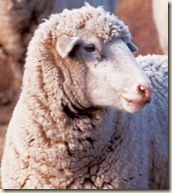Interesting article from The Writer's Almanac
It was on this day in 1875 that the largest recorded swarm of locusts in American history descended upon the Great Plains. An estimated 3.5 trillion locusts made up the swarm. It was about 1,800 miles long and 110 miles wide, ranging from Canada down to Texas.
Swarms would occur once every seven to 12 years, emerging from river valleys in the Rocky Mountains and sweeping east across much of the country. The size of the swarms tended to grow when there was less rain, and in 1873, the American West began to go through one of its driest periods on record.
The land was still relatively dry on this day in 1875 when farmers just east of the Rocky Mountains began to see a cloud approaching from the west. Some farmers noticed the distinctive color of the cloud, glinting around the edges where the locust wings caught the light of the sun.
People there that day said that the locusts descended like a driving snow in winter, covering everything in their path. Some people described the sound of the swarm landing as like thunder or a train. The locusts blanketed the ground, nearly a foot deep. Trees bent over with the weight of the insects, and large tree limbs broke off under the pressure.
They ate nearly every living piece of vegetation in their path, as well as harnesses on horses, the bark of trees, curtains, and clothing hung on laundry lines. They gnawed on fence posts and railings, and they especially loved the handles of farm tools, which were left behind polished, as if by fine sandpaper. Some farmers tried to scare away the locusts by running into the swarm, and they had their clothes eaten right off their bodies.
In the wake of the swarm, settlers on half a million square miles of the West faced starvation. Similar locust swarms occurred in the following years, and farmers became desperate. But by the mid-1880s, the rains had returned, and the swarms died down. Most scientists predicted that the locusts would return with the next drought. Mysteriously, they did not. Within a few decades they were believed to be extinct. For most of the 20th century, no one knew what had happened to the locusts, but recent evidence suggests that the cultivation of the land on the Great Plains changed the geography so much so quickly that the Rocky Mountain locust was unable to adapt. The last two live specimens of the Rocky Mountain locust were collected in 1902, and those specimens are now stored at the Smithsonian Institution.


